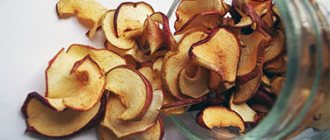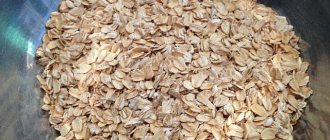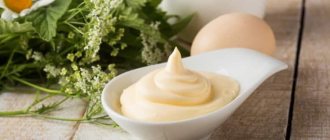Pike perch is a predatory freshwater fish. In terms of gluttony, this fish ranks second after pike among predators of fresh water bodies. Due to its high aggressiveness and mobility, its meat contains little fat.
This fish is found everywhere in Eurasia: from Eastern European rivers and lakes to fresh water bodies of the Far East. Dishes from pike perch are found in the cuisines of different nations. Due to the low fat content in the meat, this fish is considered a dietary product. The rich vitamin and mineral composition and a large amount of easily digestible protein with a low calorie content of pike perch meat allow it to be used in the preparation of fish dishes for the first feeding of infants.
General information
Pike perch is difficult to confuse with other fish. Its body is long, elongated, its head is elongated, and its jaws have many large teeth. The body has a greenish-gray color, on which dark transverse stripes are clearly visible, the abdomen is silvery. On the back of this fish there are two fins with hard rays that end in sharp spines. The shell of the pike perch's eyes is orange.
Content:
- General information
- Chemical composition
- Beneficial features
- Hazardous properties
- Consumption rate
- How to choose
- How best to store
- How to cook
- Conclusion
Pike perch lives in deep water in clean fresh waters with a clay or sandy bottom and a coastal zone overgrown with vegetation. It feeds mainly on small fish of low value, sometimes the remains of frogs and crayfish shells are found in its stomach.
Over the course of a year, pike perch gains up to one kilogram in weight, and over its entire life - up to 15-20 kg, reaching a length of up to one meter. Mature females are very fertile: during the spawning period they lay up to a million eggs. The male protects the offspring. Knowing this, many species of fish lay their eggs in pike perch nests.
Possible danger and contraindications
This fish variety has few contraindications for use and inclusion in the diet:
You should also not forget about basic safety rules: carefully inspect the product before purchasing, be sure to subject the product to sufficient heat treatment.
It is also believed that river varieties of fish are the main carriers of opisthorchiasis (these are flatworms that usually settle in the bodies of fish).
Fishermen say that this does not apply to predatory fish, but doctors have a different opinion about this. Buy fish from trusted people , and during cooking, subject it to thorough heat treatment to reduce the risk of infection.
Pike perch can also suffer from a kind of peptic ulcer. On the body of the fish you can see white tumors, which can reach up to 8-10 cm in diameter. The ulcers have a round shape. Such pike perch is dangerous for humans.
A few more facts about pike perch and the rules for preparing it in this video:
Chemical composition
Pike perch meat is an easily digestible protein product.
The absence of carbohydrates and the high water content in the product ensure the low calorie content of this fish (about 84 kcal per 100 g). Nutritional value of pike perch
| Name | Content in 100 g of raw fish, grams |
| Squirrels | 18,4 |
| Fats | 1,1 |
| Carbohydrates | 0 |
| Water | 80,0 |
Pike perch meat proteins are rich in essential amino acids for humans (isoleucine, leucine, lysine, methionine, tryptophan and phenylalanine). Fish fats are 75% mono- and polyunsaturated fatty acids that are beneficial for human health.
In addition to the main energy and plastic substances, this fish is useful for its rich vitamin and mineral composition.
Vitamins in pike perch
| Name | Content in 100 g of raw fish, milligrams |
| Vitamin A (retinol) | 0,01 |
| Vitamin B1 (thiamine) | 0,08 |
| Vitamin B2 (riboflavin) | 0,11 |
| Vitamin PP (nicotinic acid) | 2,0 |
| Vitamin C (ascorbic acid) | 3,0 |
| Vitamin E (tocopherol) | 1,8 |
Pike perch meat contains many minerals:
- macroelements (potassium, calcium, phosphorus, magnesium, sodium, chlorine, sulfur);
- trace elements (iron, iodine, manganese, fluorine, chromium, zinc, copper, cobalt, molybdenum).
Minerals in pike perch
| Name | Content in 100 g of raw fish, milligrams |
| Potassium | 280,0 |
| Phosphorus | 230,0 |
| Sodium | 35,0 |
| Calcium | 35,0 |
| Magnesium | 25,0 |
| Iron | 0,50 |
The vitamins, minerals and unsaturated fatty acids of pike perch meat have powerful antioxidant properties.
Beneficial features
Regular consumption of pike perch meat, due to its chemical composition, contributes to:
- normalization of metabolism;
- improving brain activity;
- increasing visual acuity;
- harmonious development of the child;
- normal functioning of the gastrointestinal tract;
- functioning of the endocrine system (adrenal glands, thyroid gland, insulin apparatus of the pancreas, gonads);
- stimulation of the immune system;
- decreased blood viscosity;
- hematopoietic processes;
- reducing blood glucose and cholesterol levels;
- restoration processes in tissues;
- improving the condition of skin, hair and nails.
The low allergenicity of the meat of this fish allows it to be used for food allergies.
There is little fat in pike perch, which makes it possible to prepare dietary dishes from it:
- for those losing weight;
- for diabetes mellitus;
- for diseases of the digestive system;
- during or after severe infectious diseases;
- for chronic kidney diseases.
The high content of natural antioxidants in combination with the minerals necessary for their action determines the antitumor effect of pike perch meat.
Why does pike perch spoil quickly?
Pike perch, like any other fish, is a perishable product. Its meat spoils quickly because:
- Pike perch is a skinny fish. Adipose tissue inhibits putrefactive processes. Since there is practically no fat in pike perch meat, putrefactive microflora quickly spreads through the connective tissue partitions throughout the muscles of the fish.
- Pike perch meat contains a lot of water. Water is a favorable factor for the development of microorganisms.
- There are no carbohydrates in pike perch. The lack of carbohydrates means that little lactic acid is produced during the spoilage process. As a result, the acidity of the meat of this fish has a neutral or slightly alkaline reaction, which promotes the development of microflora.
To avoid getting poisoned by pike perch, you need to know how to choose it correctly.
Pike-perch fish: benefits and harm to the body
In the body, tender meat is quickly broken down into bioavailable nutrients and is completely absorbed. The product does not cause allergies, therefore it is used in complementary feeding of one-year-old children and is included in the diet of pregnant and lactating women.
Benefits of the pike perch diet:
- a person receives complete proteins and essential amino acids;
- The high-protein composition burns fat and forms muscle tissue.
- blood composition improves, heme iron content increases;
- natural iodine normalizes the functioning of the thyroid gland;
- the endocrine system is supported, reproductive function is restored;
- the immune system and the body’s ability to regenerate are restored - if you regularly consume fish, early graying is prevented, the skin becomes smooth and elastic.
The meat of the freshwater predator is tasty, but its caviar (galagan) is no less valuable. Nutritionists are confident that the fish delicacy perfectly combines taste and beneficial properties. Caviar is a natural concentrate of proteins and microelements. A sandwich with a grainy filling is recommended for fitness activities or a low muscle mass index.
Which fish is dangerous?
Like any freshwater fish, pike perch can be harmful if improperly prepared or eaten in excess. According to some data, during the smoking process, carcinogens are formed in the fillet, while the cold method does not kill parasitic pathogens, which is fraught with helminthiasis infection.
Important . Being sensitive to the ecology of its habitat, the predator tends to accumulate harmful compounds from water bodies (especially mercury). To protect yourself, it is better to purchase fish from large retail chains that are ready to provide a veterinary certificate and certificate packages.
Hazardous properties
Pike perch is contraindicated in case of phenylketonuria - a hereditary fermentopathy in which the amino acid phenylalanine cannot be absorbed by people. Pike perch meat is rich in phenylalanine, so its consumption in case of phenylketonuria is fraught with toxic damage to the central nervous system.
Pike perch can be a source of toxic infections, parasitic worms (helminths), and pathogenic microorganisms that enter its meat from the water.
The most dangerous toxic infection that you can get from eating pike perch is botulism. Botulism is caused by botulinum toxin, a specific toxic substance produced by clostridia botulinum. Clostridia in pike perch are found in the form of cysts, from which they are released when the fish becomes ill, injured or dies. For active reproduction of clostridia and their release of botulinum toxin, anaerobic conditions are required, which are created by improper salting, smoking, drying or preservation of fish. Mortality from botulism is high: with untimely administration of anti-botulinum serum, up to 60% of patients die. Death occurs due to paralysis of the respiratory muscles.
The meat of freshwater fish, which includes pike perch, can become a source of 40 helminthic infestations. The most common of them include:
- wide tapeworm;
- cat fluke;
- Chinese fluke;
- hookworm;
- roundworm;
- anisakid;
- Trichinella.
The most common and dangerous worms found in pike perch include tapeworm and cat fluke.
Broad tapeworm enters the human body with pike perch meat or caviar, causing diphyllobothriasis. Several of these parasites can live in the intestines of one person at the same time. For a long time (often for several years), diphyllobothriasis is clinically manifested only by various kinds of ailments, to which a person may not pay attention. During this time, the length of the worm reaches tens of meters. During their life, tapeworms release many toxic products that are absorbed into the human blood. When the disease lasts for many years, substances secreted by the worms:
- inhibit the hematopoietic function of the bone marrow;
- disrupt sensitivity in peripheral tissues;
- have hepato- and splenotoxic effects, as a result of which the liver and spleen increase in size;
- cause severe allergic reactions.
The cat fluke, the causative agent of opisthorchiasis, also enters the human body from fish meat. From the human intestine, the parasite penetrates the bile ducts and pancreatic ducts, where it attaches itself to their walls. During their life, flukes secrete toxic substances and also physically block the bile ducts, causing obstructive jaundice. Chronic opisthorchiasis can provoke the development of liver cancer.
In addition to pathogenic microorganisms, the water in which pike perch lives may contain harmful and dangerous substances (contaminants):
- salts of heavy metals;
- radionuclides;
- pesticides;
- fertilizers;
- carcinogens.
Living in polluted water bodies of pike perch leads to the accumulation of contaminants in its meat. Eating pike perch caught in such water is dangerous due to intoxication and poisoning.
Eating low-quality pike perch meat can cause irreparable harm to health. To prevent this, you need to know how to choose, how to store and how to cook this fish correctly.
Contraindications for eating pike perch
Pike perch is very good for health, but still a number of dishes prepared from this fish should be consumed with caution by some categories of people.
Thus, smoked pike perch is not subjected to sufficient heat treatment, and since it can be an intermediate link in the development cycle of tapeworms and other parasites, when eating fish, a person can become infected with helminthiasis. In addition, smoked pike perch may be an unsuitable food for diseases of the digestive tract. The calorie content of fried pike perch is quite high, so if you are obese you should avoid it.
Video from YouTube on the topic of the article:
Consumption rate
The calorie content of raw pike perch meat is low, so it is classified as a dietary food. When consuming dishes from it in your diet during a diet, you should take into account that some methods of culinary processing (frying, stewing, stuffing) increase their energy value:
- raw fish – 84 kcal/100 g;
- boiling – 97 kcal/100 g;
- grilling – 119 kcal/100 g;
- stuffing – 144 kcal/100 g;
- frying – 180 kcal/100 g.
Pike perch is a good option for using fish in the diet of almost all groups of people. The approximate daily amount of fish on the menu should be:
| Contingent | Fish consumption rate per day, grams |
| Children 9-12 months | 30-50 (as puree) |
| Children 1-3 years old | 20-25 |
| Children 4-6 years old | 45-50 |
| Children over 7 years old and teenagers | 25-30 |
| Adults | 75-100 |
Fish should be in every person's diet. Fish consumption rates depend on age, gender, physical and mental activity, and physiological state. Indicative standards are not mandatory. They can be increased or decreased by other protein foods.
How to choose
You can catch pike perch yourself while fishing, buy it in a store or at the market. In the retail chain it can be found fresh, chilled or frozen.
To choose the right fresh or chilled pike perch, you must adhere to some rules when choosing it:
- You can only buy fish in specialized stores, supermarkets or official markets. This way you can be sure that the pike perch has passed a veterinary and sanitary examination.
- If possible, you should buy live fish from an aquarium. If this is not possible, you only need to buy whole fish.
- We need to inspect the carcass. There should be no stains, mucus, or wounds unusual for pike perch on its surface. Pike perch scales should be clean and shiny. The fish's eyes should be clear and protruding.
- You should definitely look at the gills. They should be red and shiny.
- Then you need to smell the fish. It shouldn't smell bad. Only a slight smell of mud is acceptable. A strong fishy smell is a sign of spoilage.
- After inspection, you need to press on the fish carcass. On fresh fish, the hole quickly levels out after pressing.
Frozen pike perch is rarely sold whole. Most often, already filleted meat is frozen. To buy high-quality frozen pike perch fillets, you should:
- Study the label. It should contain information about the manufacturer, weight, date of catch and freezing. If the fillet is glazed, the water content (as a percentage of weight) must be indicated on the packaging.
- Inspect the packaging. The fillet must be sealed. If the integrity of the packaging is damaged, you should refuse the purchase.
- Assess the color of the fillet. It should be white. Yellowness is a sign of repeated freezing or age of the fish.
- The glaze should cover the entire product, and the fillet should be visible through it. If the glaze layer is too thick, this may indicate improper storage of the product or dishonesty of the manufacturer.
How best to store
It is better to cook fresh or chilled fish immediately after purchase. If you need to store it for some time, then you need to do this in the refrigerator or freezer. Before storage, it is imperative to gut the carcass, clean, rinse and dry. Place the fish in a container, sprinkle with a little salt and cover with cling film.
Pike perch can be stored:
- in the refrigerator at a temperature of +4°C – no more than 48 hours;
- in the freezer at a temperature of -5°C – no more than 2 weeks;
- in the freezer at a temperature of -18°C – no more than six months.
After defrosting, further storage of pike perch (whole or filleted) is unacceptable!
How to get rid of the smell of mud
Freshwater fish usually smell like mud. Before preparing pike perch dishes, you need to get rid of this unpleasant odor. To do this, you should gut, clean, wash the carcass and place it in a container in which it fits entirely. After this, you can use one of the following methods:
- Squeeze lemon juice and dilute it with water in a 1:1 ratio. Pour the lemon solution over the inside and outside of the carcass, and place the lemon peels on top. Cover the container with cling film and put it in the refrigerator for a couple of hours.
- Dissolve one glass of coarse table salt in a three-liter jar of water. Pour this salt solution over the fish and leave it covered in film in the refrigerator for 30 minutes.
- In a two-liter container, dilute two tablespoons of table vinegar, add a tablespoon of salt, peppercorns, and bay leaf. Pour this marinade over the pike perch carcass, cover with film and refrigerate for 1 hour.
Before cooking, fish should be rinsed to remove excess acid or salt. The choice of method for getting rid of the unpleasant swamp smell depends only on the taste of the cook.
Cold smoked pike perch
Cold smoked pike perch takes longer to cook. The process consists of salting, drying and smoking. You can use marinating; for this, brine is prepared and poured over the fish.
Smoking time for cold smoked pike perch is up to 6 days (depending on the size of the fish), temperature regime is no more than 25 degrees.
Pickling
The recipe for cold smoked pike perch involves salting using the dry or wet method. Conventional salting involves placing the carcasses in a bowl and sprinkling them with table salt. Then a weight is placed and the fish is salted in this way for 2 days. When finished, the carcasses are washed and hung in the shade in a draft to dry for 24 hours.
For marinating you will need for 2 liters of liquid:
- 0.5 kg table salt;
- 25 g sugar;
- pepper and bay leaf.
Boil the mixture with salt, sugar, pepper and bay on the stove. When it cools down, pour it over the carcasses. The salting time for large fish is 3 hours, for medium fish - 2 hours, for small fish - an hour.
Before smoking pike perch in a cold smoker, after marinating, you need to dry it and dry it. It is recommended to install spacers in large specimens. This will speed up the process. For large fish it will take 3-5 days, small fish - 2-3 days.
For those who relax in nature, a recipe for quick salting of pike perch for cold smoking is suitable. The fish is salted, placed in a bag and buried. After 1.5 hours, take it out, turn it over and leave it in the ground again for the same salting time. This is followed by the drying process.
For a simple brine in nature with 1 liter of water you will need:
- 100 g salt;
- 20 g sugar;
- 3 pcs. bay leaves;
- 20 pcs. peppercorns;
- 1⁄4 tsp. ground cilantro seeds;
- 3 pcs. cloves.
Cook the mixture for 5 minutes, cool and pour over the carcasses. Marinate for two days, dry for 24 hours, smoke for the same amount, air for 8-12 hours.
Calorie content, benefits and harm
The calorie content of cold smoked pike perch is not much different from the hot method and is 91 kcal.
Cold smoked pike perch at home is prepared at a low temperature, which does not completely get rid of helminths. Therefore, there is always a danger of becoming infected with parasites. However, in industrial production, cold smoked pike perch is prepared in compliance with GOST and technical conditions, which guarantees its safety.
The cold processing method is more harmful to the body, since smoldering wood and smoke form chemical compounds that provoke the appearance of carcinogens in meat. This increases the chance of cancer. Also, smoked pike perch is not recommended for diseases of the urinary organs. Before cooking, the product is soaked in a concentrated salt solution, which can cause colic in the kidneys.
Cold smoked product storage
The shelf life of cold-smoked pike perch is 9 days in a refrigeration unit, wrapped. This can be foil or parchment.
The smell of smoked meat is absorbed by other products, so it is better to place the product in a container with a lid. If the fish disappears, plaque, mucus and a bad smell will appear.
How to pack pike perch for storage
How to cook
Pike perch has tender white meat. There are few bones in it. It is easy and quick to prepare. Pike perch meat goes well with:
- cheeses;
- baked vegetables;
- mushrooms;
- cream and sour cream;
- white and tomato sauces;
- side dishes of cereals, buckwheat, potatoes.
This fish can be prepared in any culinary way:
- boiling;
- steaming;
- stewing;
- baking (in the oven, in foil, on the grill);
- frying (in a frying pan, deep-fried);
- stuffing;
- grinding into puree or minced meat;
- drying;
- drying;
- smoking.
The method of culinary processing depends on the imagination of the cook. The main thing is that the pike perch dish is tasty and as healthy as possible.
Prepared from pike perch:
- first meal;
- second courses;
- jellied dishes;
- snacks;
- salads;
- baking.
There are a lot of recipes in which the main ingredient is pike perch meat or caviar. From pike perch meat you can prepare a simple dish that will appeal to all family members, including those on a diet: steamed pike perch cutlets. To prepare them you need to take: 400 g fish fillet, 100 g champignons, 1 chicken egg, 1 lemon, salt and spices to taste. Minced meat is prepared from fillet and mushrooms, to which egg, salt and spices are added. The formed cutlets are cooked in a double boiler.
Pike perch baked in sour cream
Stage 1
We clean the fish by gutting and thoroughly washing. Then dry with a paper towel and cut into portions. Add salt, roll in flour and fry on all sides in hot vegetable oil until an appetizing brownish crust forms.
2. Stage
Then place in a greased baking dish. Top with an even layer of sour cream mixed with grated cheese and sprinkle with breadcrumbs.
3. Stage
Place the pike perch prepared in this way in a preheated oven and bake at 180 degrees for 15 minutes. Then place the dish decorated with lettuce leaves and serve, sprinkled with finely chopped herbs.
.










